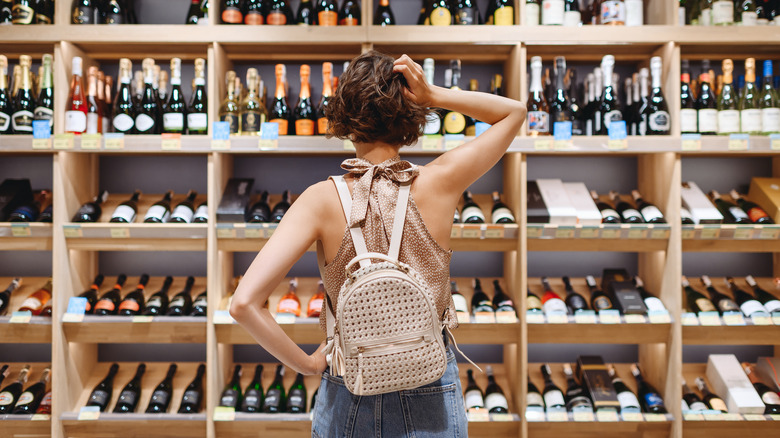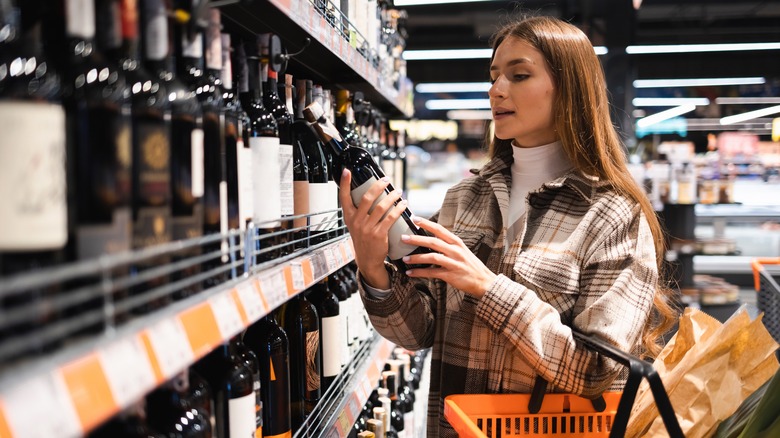Key Features To Look For When Purchasing Wine At A Grocery Store
Legendary novelist Paulo Coelho once prescribed, "All wines should be tasted; some should only be sipped, but with others, drink the whole bottle" (via Goodreads). On either occasion, you can pop down to your local Trader Joe's and snag a bottle of wine for less than $10. Whether you're hitting up Whole Foods, Costco, Target, Aldi, or someplace else, the Thursday-night grocery store wine run is very real.
But, unlike at a boutique bottle shop, many grocery stores present shoppers with an overwhelmingly large (and gorgeous) selection. It can be a little daunting to know where to start and how to pick the right bottle. That's why Tasting Table reached out to wine expert Matt Woodburn-Simmonds, founder of Decoding Wine.
Decoding Wine is a guide for understanding wine labels and increasing novice-sommelier knowledge and appreciation of various selections. Before creating his guide, Woodburn-Simmonds formerly served as a wine consultant for multiple Michelin-starred restaurants for an entire decade. Now, he's bringing his knowledge to home cooks and wine fans everywhere. Here are his tips for purchasing wine at a grocery store and shopping like a sommelier.
Look for mid-range options that are made from small regions or specific vineyards
It pays to think twice about buying wine at the grocery store. For starters, fancy, ornate bottles unnecessarily drive up the price tag, says Woodburn-Simmonds, so keep it simple with the outside of your bottle. It's (quite literally) what's on the inside that counts here. According to Woodburn-Simmonds, the cheapest selections you see will be cooking wines, which don't belong in your glass. Opt for a unique mid-range priced offering instead.
One major appeal of grocery store wines, says Woodburn-Simmonds, is their consistency. If you have a tried-and-true go-to favorite bottle, then you can be sure it'll taste the same every time — but this means quality may take a plunge. Popular brand names and grape varieties may seem like safe bets, he says, because they're made in large batches and fairly predictable. But, if you can find them, wines from smaller growing regions and specific vineyards are preferable.
A label printed with "Vin de France" probably includes a haphazard mix of different grape blends. For that reason, the wine expert recommends shopping for local wines whenever you can. Transportation costs for local wines are axed altogether, which means you're just paying for the wine itself. And as for whether red or white, Woodburn-Simmonds vouches that you're most likely to run across a better-quality white since reds can be made with additives — but it's ultimately your preference.

